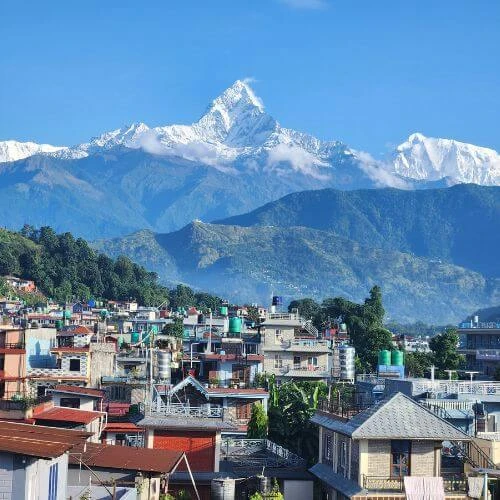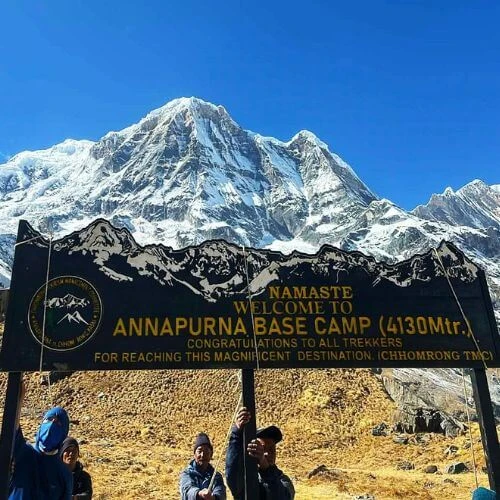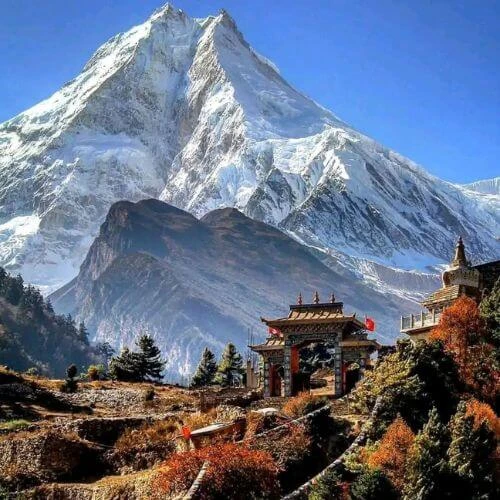The Inca Trail is a renowned 43-kilometer (26.7-mile) hiking path that leads to the iconic Machu Picchu, an ancient Incan citadel constructed in the mid-15th century and now designated as a UNESCO World Heritage Site. Choosing the best time to go to the Peru Inca Trail is crucial for an optimal experience.
The dry season, from May through September, offers the most favorable weather conditions. Minimal rainfall and clear skies provide stunning views of the Andean landscapes. However, this peak tourist season also means more crowds on the trail, so you must book permits well in advance, often several months prior. The shoulder months of April and October can be good alternatives, offering decent weather and fewer hikers, though there is a slight chance of rain.
Proper preparation is essential whenever you go, as Machu Picchu Peru Inca Trail is considered moderately difficult due to high altitudes and challenging terrain. The trail reaches 4,215 meters (13,828 feet) at Dead Woman's Pass. It winds through diverse landscapes like cloud forests, mountain passes, valleys, and ancient Incan ruins, ending at the Sun Gate entrance to Machu Picchu after typically 4 days and 3 nights of hiking.
This trail was an essential route connecting the Incan capital Cusco to their sacred city, offering hikers today a glimpse into the rich history and culture of the Inca Empire. Along the way, hikers experience diverse landscapes, including cloud forests, mountain passes, valleys, and ancient Incan ruins and archaeological sites, such as Runcuracay, Sayacmarca, Phuyupatamarca, and Wiñay Wayna.
Machu Picchu itself impresses as an ancient citadel consisting of hundreds of stone structures, including temples, palaces, and terraced fields, all constructed without the use of mortar or wheels. It served as an estate for the Incan emperor Pachacuti and fell into abandonment less than 100 years later when the Spanish conquered the Incan Empire. A Cusco city tour is an excellent way to explore the rich history and culture of the region before going on the journey to Machu Picchu. This stunning site provides hikers with an unforgettable experience, combining natural beauty, rich cultural heritage, and a sense of accomplishment upon reaching one of the world's most iconic archaeological sites.

To preserve this renowned destination in Peru, the Peruvian government has implemented regulations for the Peru Inca Trail tour. Hikers must obtain permits issued by licensed tour companies authorized by the government, with a limited number available per day. This unforgettable Inca Trail tour combines jaw-dropping natural scenery, fascinating archaeology, and a rewarding sense of accomplishment upon reaching the iconic lost city of the Incas, Machu Picchu. Book your Inca Trail Peru tour with us to experience this remarkable journey.
Inca trail in June, July, August ( Peak season )
The peak season months of June, July, and August offer the best time to go to Peru Inca trail. During this period, trekkers enjoy near-perfect weather conditions that make for an exceptional hiking experience.
Daytime conditions are ideal, with sunny and dry days, virtually no rainfall, and comfortable temperatures ranging from 60°F to 68°F (15°C to 20°C). The lack of cloud cover and precipitation ensures crystal-clear, unobstructed views of the stunning Andean mountain scenery. Typically, brilliant blue skies provide ideal conditions for photography and sightseeing along the trail.
However, nights can be bitterly cold, with temperatures dropping well below freezing, especially in June and July. Trekkers should be prepared with proper insulation, such as warm base layers, insulated jackets, and suitable sleeping bags for camping. The cold, clear nights also offer incredible opportunities for stargazing in the Andes.

The dry weather during these months keeps the trail in optimal condition, with minimal mud or slippery sections. However, some sections can still be challenging due to the steep inclines, high altitude, and uneven terrain.
It's important to note that the peak season is the busiest time to hike on the Inca Trail, attracting the largest number of trekkers. Permits for the classic 4-day Inca Trail sell out months in advance, so booking well in advance (sometimes 6-8 months ahead) is crucial. The crowds may detract from the solitude and serenity of the experience but also create a vibrant atmosphere along the trail.
With the dry conditions, trekkers may encounter a variety of Andean wildlife, such as viscachas (rabbit-like creatures), various bird species, and even the occasional Andean bear (though sightings are rare). The vegetation along the trail remains lush and green, with numerous wildflowers in bloom, adding splashes of color to the landscapes.
Inca trail in April, May, September, and October ( Shoulder Season )
The shoulder season, encompassing the months of April, May, September, and early October, offers fantastic weather and scenery for hiking the Inca Trail in Peru. This period provides an excellent time to trek the trail while avoiding the largest crowds of the peak season. The shoulder season is considered the best time of the year to do the Inca Trail, as it strikes a balance between favorable conditions and fewer tourists.
Daytime temperatures during the shoulder season range from 64°F to 77°F (18°C to 25°C), creating mild and comfortable hiking conditions. Generally, clear and sunny skies dominate, with minimal rainfall. Occasional light showers may occur, but they are typically brief and infrequent. After the rainy season, the landscapes along the Inca Trail transform into lush, verdant scenes with vibrant shades of green blanketing the mountains and valleys. Wildflowers bloom in full, adding splashes of color to the stunning natural scenery. The vegetation reaches its peak lushness during these months, offering incredible photo opportunities.

With minimal rainfall, trail conditions remain excellent during the shoulder season. Muddy or slippery sections are rare, allowing for a safer and more comfortable trekking experience. However, some sections can still pose challenges due to the high altitude and uneven terrain. The shoulder season sees fewer trekkers than the peak months, although the trail can still be relatively busy, especially in early September. Permits may not sell out as quickly as during the peak season, but advance booking is still
While the shoulder season (April, May, September, and early October) is generally considered the best time for hiking the Inca Trail, it's essential to keep in mind the weather patterns during these months. In April and May, you may experience some residual rainfall as these months mark the transition from the wet season to the dry season. On the other hand, September and early October signal the shift from the dry season to the wet season, so you can expect an increasing chance of showers as October progresses.
Inca trail in January, March, November, December (Monsoon Season)
The Inca Trail experiences its monsoon season from November through March, presenting unique challenges for trekkers. During this period, heavy precipitation makes the trail muddy, slippery, and difficult to traverse. Packing proper waterproof gear, such as rain jackets, pants, and backpack covers, as well as extra warm layers for cooler temperatures at higher elevations, becomes essential.
In November and December, the wet season begins with frequent rainfall, leaving trail conditions muddy and views often obstructed by clouds. January and February are the wettest months, averaging 6-8 inches (150-200 mm) of rain per month. Heavy downpours increase the risks of landslides and erosion. The combination of rain and foot traffic makes the trail extremely slippery, requiring extra caution and trekking poles.
As the wet season subsides in March, rainfall decreases to around 4 inches (100 mm), but trails can still be muddy and slippery. Cloud cover may persist, occasionally clearing to reveal the landscapes.

During this rainy season on the Inca trail, monitoring weather forecasts closely and remaining flexible is crucial, as severe conditions can force trail closures or delays. Physical preparation for the demanding conditions of wet, slippery terrain is also essential. The wet months tend to see fewer crowds along the route, making it a unique time to experience the Inca Trail.
Inca Trail in February
The month of February is the wettest time on the Inca Trail. There is a lot of heavy rain during this month. The trail becomes extremely muddy and slippery because of the constant downpours. Landslides and erosion are also more likely to happen due to the intense rains.
Trekking on the Inca Trail in February is extremely difficult and dangerous. The combination of mud, slippery conditions, and potential landslides makes the trek very risky. It requires special gear, extra caution, and physical preparedness to handle such challenging terrain.
For these reasons, the Inca Trail is usually closed to trekkers during the entire month of February. This allows the trail to undergo necessary maintenance and repairs after the heavy rains. Closing the Inca trail in February helps protect both trekkers and the ancient pathway itself from potential harm caused by the intense wet season conditions.
Difficulty level of Inca Trail to Machu Picchu
The Inca Trail is a renowned hiking route in Peru that takes trekkers to the magnificent ancient city of Machu Picchu. While the trail offers breathtaking scenery and a chance to experience the rich cultural heritage of the Incas, it is also considered a moderate to challenging hike.
One of the primary factors contributing to the difficulty is the high altitude. The trail reaches elevations of over 4,200 meters (13,800 feet) above sea level, which can lead to altitude sickness for hikers who are not properly acclimatized. The classic Inca Trail to Machu Picchu in Peru is approximately 43 kilometers (26 miles) long, and it typically takes 4 days and 3 nights to complete, making it a multi-day trek.

The terrain itself is another challenging aspect of the Inca Trail in Peru. The route involves steep ascents and descents, with numerous stone steps and uneven surfaces. Some sections can be particularly demanding, especially for those with limited hiking experience. Additionally, the weather conditions in the Andes Mountains of Peru can be unpredictable, with rain, strong winds, and low temperatures possible at any time of the year.
Despite these challenges, the Peru Machu Picchu Inca Trail is achievable for most reasonably fit individuals with proper preparation and guidance. It is recommended to acclimatize to the high altitude before going on the hike and to hire a licensed guide who can ensure a safe and enjoyable experience while giving valuable insights into the region's rich history and culture.
Conclusion
The Inca Trail to Machu Picchu is a remarkable hiking experience that allows you to witness the incredible architecture and history of the Inca civilization up close. While it is a challenging trek due to the high altitude, steep terrain, and unpredictable weather conditions, proper preparation and guidance from experienced professionals can make this journey an unforgettable and rewarding adventure. By choosing the best time to hike the Inca trail, you can maximize your enjoyment of the stunning natural scenery and ancient ruins along the way. The Inca Trail will leave you amazed by the Inca people who built it long ago.

Frequently asked questions
1. How long does it take to walk the Inca Trail?
The classic Inca Trail typically takes 4 days to complete, covering approximately 26 miles (42 km) of breathtaking Andean scenery, ancient ruins, and diverse ecosystems.
2. Why is the Inca Trail to Machu Picchu so famous?
The Inca Trail is famous for its stunning scenery, including mountain views and cloud forests, and its historical significance as a route used by the ancient Incas to reach the sacred city of Machu Picchu. It offers hikers a chance to experience both natural beauty and archaeological marvels along a well-preserved path that reflects the engineering prowess of the Inca civilization.
3. Can a beginner do the Inca Trail?
Yes, beginners can do the Inca Trail, but it's important to be prepared physically and mentally for the challenges it presents. The trail involves hiking at high altitudes, with some steep ascents and descents, so it's recommended to train beforehand with hikes and cardio exercises. Many beginners complete the trail each year, often with the assistance of experienced guides and porters who help carry gear.
4. How cold is the Inca Trail?
The temperature on the Inca Trail can vary widely depending on the time of year and the altitude. During the day, temperatures can range from 20°C to 25°C (68°F to 77°F) in the warmer months (April to October), but it can get cooler, especially at night and at higher altitudes. Nighttime temperatures can drop to around 0°C to 5°C (32°F to 41°F), particularly in the dry season (June to August). It's essential to pack layers and be prepared for varying temperatures throughout the trek.
5. Which is harder Kilimanjaro or Inca Trail?
Kilimanjaro is generally considered harder due to its higher altitude, varied terrain, and longer duration (5-9 days), whereas the Inca Trail is a 4-day trek with lower altitudes and well-defined paths, suitable for most hikers with good preparation.











